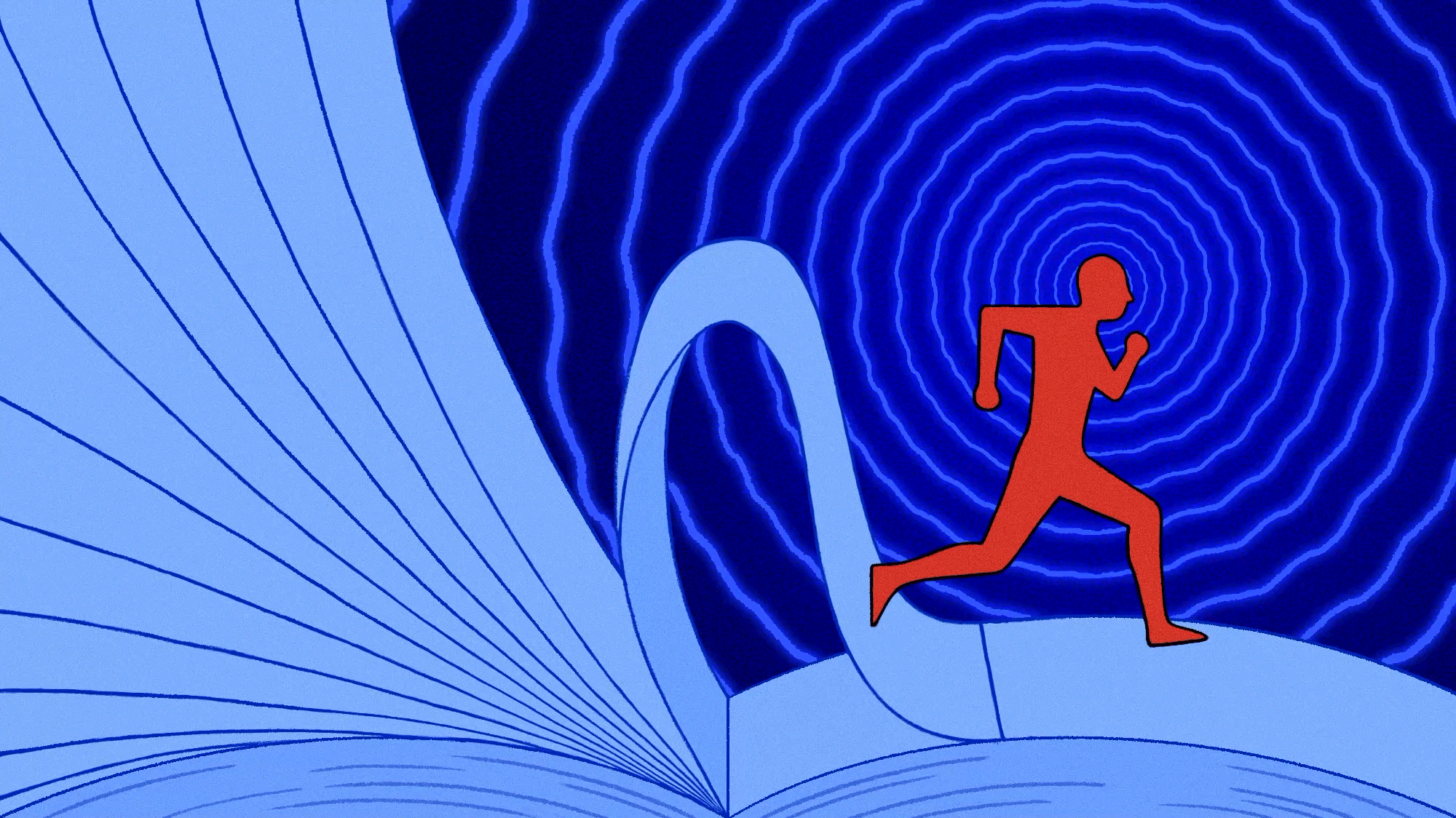This is an edition of the Books Briefing, our editors’ weekly guide to the best in books.
In recent years, some of the most talked-about literary novels have not given their readers much to talk about, at least when it comes to plot. In the late 2010s, authors such as Rachel Cusk, Ben Lerner, and Sheila Heti wrote books that are heavy on interiority and light on events; they have few of the markers of a traditional rise-and-fall story structure, and instead prioritize voice and close description. This kind of writing is not for everyone: The author M. L. Rio believes, for example, that there’s “no reason a novel should have to choose between voice and action.” This week, she recommends eight plot-forward books to read when you’re looking for a gripping story.
I agree that stories can offer both excitement and introspection, and I wonder if those who believe in a sharp division between plotty and plotless novels might be doing themselves a disservice. Story-forward novels are sometimes deceptively interior, balancing more explosive moments with long stretches of character-driven reflection. In Donna Tartt’s The Secret History, for example, you know from the very first page who has died; for the rest of the book, you simply admire the author’s skill as she conveys why and how. This modern classic of dark academia has many passages of the kind often found in a novel of the mind: The main character, Richard Papen, is a small-town California boy wildly out of place at an elite New England college. A great many of the 500-plus pages take place within Richard’s head as he observes a group of mysterious classics students, wonders what they think of him, and tries to figure out where he fits into the clique’s social world. Many of his ruminations turn on small, inscrutable details—and they’re riveting, even though little happens within them to move the main drama forward.
Conversely, many stories that could be called plotless are hardly lacking in activity—smaller moments simply take on greater weight. About Cusk’s Outline, for instance, you could say that not a lot happens. But the narrator flies to Greece, meets people for meals, talks with students and colleagues. I’d argue that every moment feels propulsive because she is actively choosing what to report and what to leave out, sharing her observations about her surroundings and her conversation partners. Her restrained yet blunt narrative describes a life as it’s actually lived.
A novel succeeds or fails by its execution: If it merely spits out plot points in quick sequence, it would read like the work of ChatGPT. A great work, however, paces out action to build suspense while making the stakes feel real within the characters’ minds. In that way, a well-made work of horror fiction and a spare, intimate first-person novella can have a lot more crossover appeal than their marketing or fanbases might indicate. Readers who find themselves gravitating toward one kind of fiction over another might be thrilled by what they find if they reach outside their comfort zone.

Eight Plot-Heavy Books That Will Keep You Turning Pages
By M. L. Rio
Some readers enjoy plotless, heady fiction. Those who don’t should try these titles.
What to Read
Mr. Dudron, by Giorgio de Chirico, translated by Stefania Heim
The relationship between the artist and their audience has been analyzed and fetishized by critics ad nauseam, but Mr. Dudron provides a fresh perspective from the artist’s point of view. This previously unpublished novel by the Greek-born Italian painter de Chirico, written fitfully over decades, doesn’t have much of a plot, instead unfurling as a series of anecdotal conversations among artists and meandering, essayistic theories of painting. In lieu of a digestible arc, the reader gets a peek inside the head of de Chirico, whose off-kilter paintings of empty city squares in the early 20th century would go on to strongly influence the Surrealists. “A work of art should never force the viewer nor the maker into an act of reasoning, or criticism, or exposition,” de Chirico writes, per one early translation; instead, “it should provoke only satisfaction … that is, a condition in which reasoning no longer exists.” — Rhian Sasseen
From our list: Six older books that deserve to be popular today
Out Next Week
 Disinheritance, by Ruth Prawer Jhabvala
Disinheritance, by Ruth Prawer Jhabvala
 Capitalism, by Sven Beckert
Capitalism, by Sven Beckert
 Across the Universe, by Natan Last
Across the Universe, by Natan Last
Your Weekend Read

How to Fix the Mess of College Sports
By Sally Jenkins
Nine head football coaches at major universities began this season with an annual salary of more than $10 million, and 46 others are scheduled to make at least $4 million. Coaches’ pay is the second-biggest athletic expense at Football Bowl Subdivision schools, behind only facility costs. Many of these coaches will collect millions even if they fail. In 2021, for example, Louisiana State University granted Brian Kelly a 10-year, guaranteed contract worth $95 million—only to dismiss him after the team started 5–3 this season. His firing triggered an almost $54 million buyout clause, and a lawsuit over what he is owed. Since the College Football Playoff system was launched in 2015, public universities are on pace to pay more than $1 billion in severance to coaches, according to a report from the Knight Commission on Intercollegiate Athletics, a think tank that studies educational reforms in sports. To repeat: Public universities are paying more than $1 billion in just 10 years to a handful of fired gym teachers. “The severance payments,” the Knight Commission’s CEO, Amy Privette Perko, told me, “have really put an exclamation point on the problem.”
When you buy a book using a link in this newsletter, we receive a commission. Thank you for supporting The Atlantic.
Sign up for The Wonder Reader, a Saturday newsletter in which our editors recommend stories to spark your curiosity and fill you with delight.
Explore all of our newsletters.
The post Two Genres That Aren’t So Different After All appeared first on The Atlantic.




